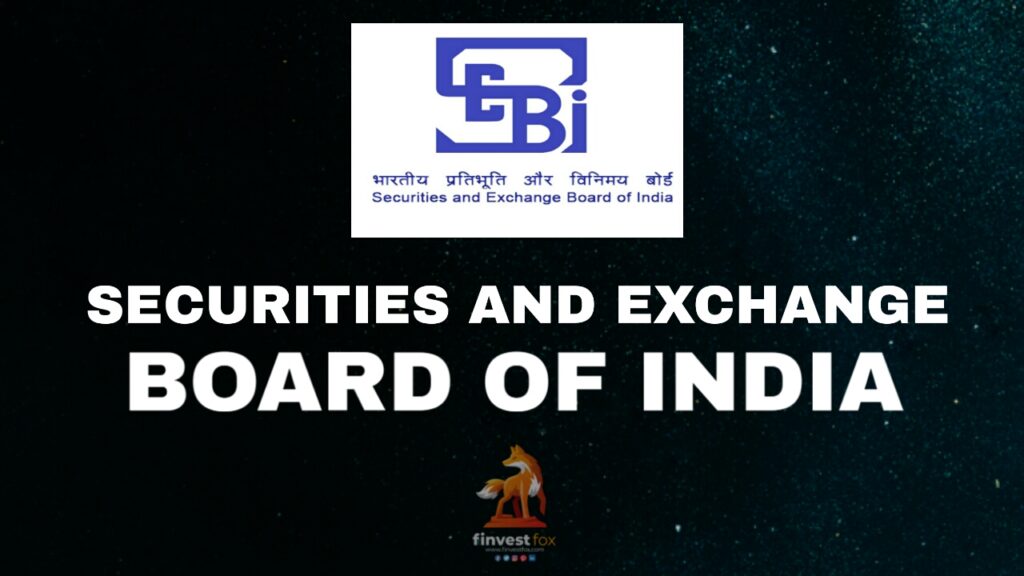A stock market is a place where trading of shares of publicly listed companies happens. stock trading and investing became popular in India long back. with the popularity of the stock market, malpractices, and fraudsters also increased. people start losing trust in the Indian stock market. At this time the government of India decided to establish an authority to reduce the malpractices and regulate the stock market. soon after the Security and Exchange Board of India (SEBI) was introduced.
What is a stock market regulator
A stock market regulator is an authority that controls and regulates the entire stock market. since the stock market is an important part of the economy, every country treats its stock market with the highest priority. fraudsters and malpractices are found in the stock market from its inception. this makes a bad image on the stock market as well as loses trust among investors. so it is necessary to control and regulate the stock market. every country regulates its stock market effectively.in India, SEBI is the regulating authority.
SEBI
The Security and Exchange Board of India is the regulating authority of the stock market in India to protect the interest of investors and prevent malpractices in the market. SEBI was established in 1992 April. it is headquartered at Mumbai and it is functioning under the Ministery of finance of the government of India. SEBI`s responsibility is to provide a healthy atmosphere for the security market by protecting the investor’s interests. and regulates the primary market, secondary market, mutual funds, and institutional investors.

Official website: https://www.sebi.gov.in/
Objectives of SEBI
- To Regulate the securities market. and ensure fair practices.
- promotion and development of the securities market.
- to protect the interests of investors in securities.
- check and control internal tradings.
- to control and regulate brokers and other related Intermediaries.
Functions of SEBI
Functions of SEBI are classified into 3 based on their area of functioning. they are protective functions, regulatory functions, development functions.
Protective Functions
- Prohibiting insider trading.
- Checking price rigging.
- Spreading awareness among investors.
- Promoting fair practices.
- Prevention of fraudulent activities.
Regulatory Functions
- Regulating stock exchanges and any other securities market.
- Registering and regulating intermediaries associated with the securities market.
- Regulating substantial acquisition of shares and take over companies.
- Regulating self-regulatory organizations.
Development Functions
- Conducting research and publishing results to all market participants.
- Promoting investor’s education.
- Promoting self-regulatory organizations.
- Education and training.
- Promoting fair practices.
Powers of SEBI
- Powers under securities contract act.
- Power to impose monetary penalties.
- Powers related to stock exchange and intermediaries.
- Power to Initiate actions in functions assigned.
Structure of SEBI
- chairman nominated by the government of India.
- Two members of the union ministry of finance.
- One member from the reserve bank of India.
- Five other members nominated by the government of India.
Departments under SEBI
SEBI monitors and regulates Indian securities market by its various departments. following 20 departments helps the smooth and accurate functioning of SEBI.
- Commodity Derivatives Market Regulation Department (CDMRD)
- Corporation Finance Department (CFD)
- Department of Economic and Policy Analysis (DEPA)
- Department of Debt and Hybrid Securities (DDHS)
- Enforcement Department – 1 (EFD1)
- Enforcement Department – 2 (EFD2)
- Enquiries and Adjudication Department (EAD)
- General Services Department (GSD)
- Human Resources Department (HRDM)
- Information Technology Department (ITD)
- Integrated Surveillance Department (ISD)
- Investigations Department (IVD)
- Investment Management Department (IMD)
- Legal Affairs Department (LAD)
- Market Intermediaries Regulation and Supervision Department (MIRSD)
- Market Regulation Department (MRD)
- Office of International Affairs (OIA)
- Regional offices (ROs)
- Office of the chairman (OCH)
- Office of Investor Assistance and Education (OIAE)
Committees under SEBI
- Technical Advisory Committee
- Committee for review of the structure of infrastructure institutions
- The Advisory Committee for the Protection and Education Fund of Investors
- Takeover Regulations Advisory Committee
- Primary Market Advisory Committee (PMAC)
- Secondary Market Advisory Committee (SMAC)
- Mutual Fund Advisory Committee
- Corporate Bonds & Securitisation Advisory Committee
Major stock exchanges registered under SEBI
As per official record. there are 9 active stock exchanges are registered with SEBI. A list of those exchanges is given below.
- National Stock Exchange-NSE
- Bombay Stock Exchange-BSE
- Calcutta Stock Exchange-CSE
- India International Exchange-INDIA INX
- Indian Commodity Exchange Ltd-ICEX
- Metropolitan Stock Exchange of India Ltd-MSEI
- Multi Commodity Stock Exchange of India-MCX
- National Commodity and Derivatives Exchange Ltd-NCDEX
- NSE IFSC Ltd source: https://www.sebi.gov.in/stock-exchanges.html
Office
SEBI operates offices in different cities in India.

Regional office
- New Delhi
- Kolkata
- Chennai
- Ahmadabad
Local office
- Cochin
- Bangalore
- Jaipur
- Guwahati
- Bhubaneswar
- Patna
Final thoughts
SEBI plays a key role in the smooth and transparent functioning of the Indian securities market. due to strict regulations and actions scams in the Indian stock market are rare these days. this made the investors confident and more people are showing interest in the Stock market. and the educational and awareness programs conducted by SEBI are making a huge impact on the stock market enthusiasts in India. in this post, we discussed SEBI and its functions and its importance. I hope this post gave you and basic knowledge about SEBI and its functions.

Pingback: What is a Stockbroker? Types and its importance? - finvestfox.com
Pingback: Stock market participants. - finvestfox.com
Pingback: The Indian stock exchanges. - finvestfox.com